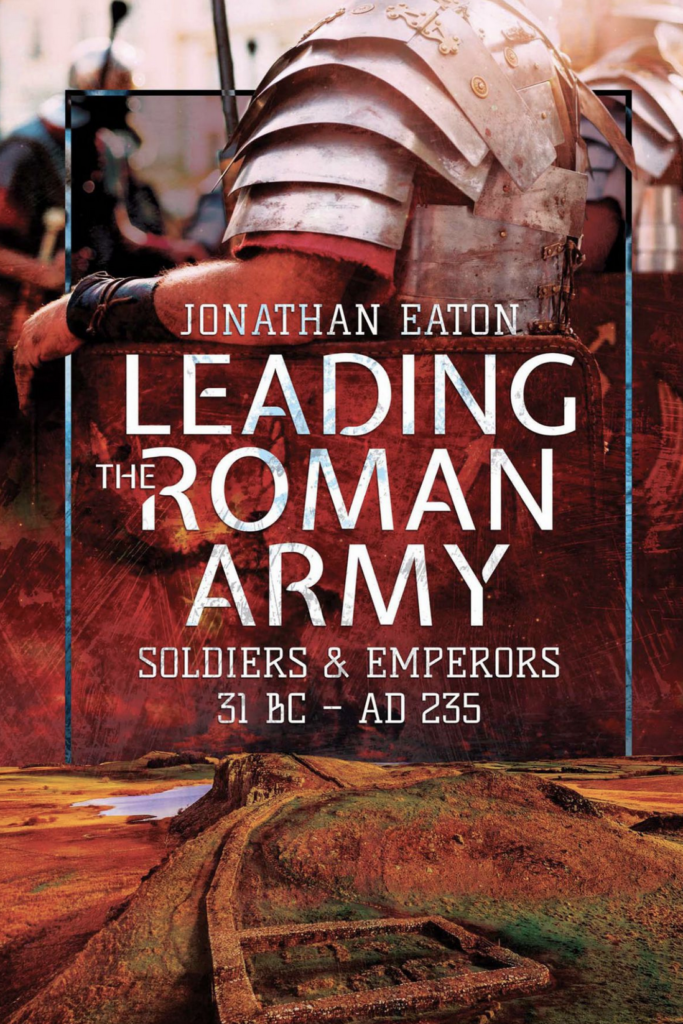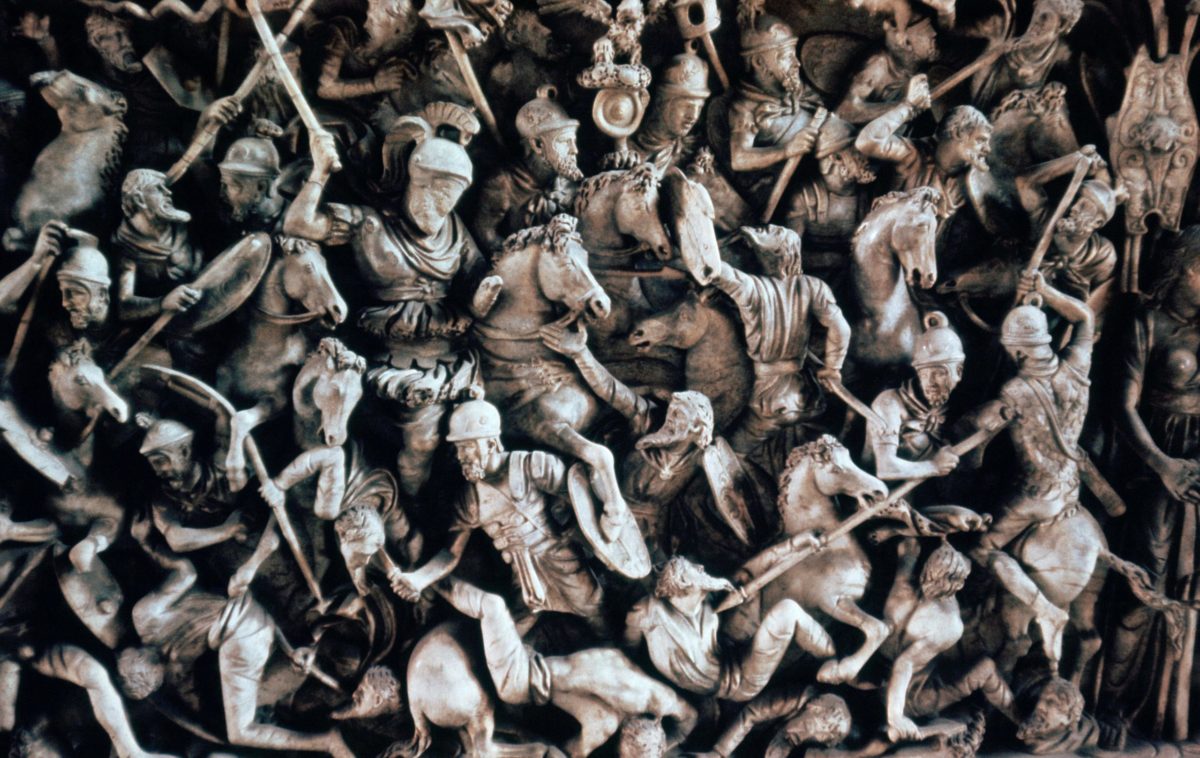Jonathan Eaton’s 2020 book, “Leading the Roman Army: Soldiers & Emperors, 31 BC – AD 235” broke new ground with an in-depth study of leadership and command structure within one of the ancient world’s most feared fighting forces. However, the book has not yet received the acclaim from military historians that it justly deserves.
Eaton’s detailed study of leadership, morale and discipline would prove a great asset to anyone seeking deeper knowledge of the history of military command and ancient warfare. This reviewer would suggest it as an ideal reading companion for those with a particular interest in studying Roman battles or who simply wish to gain a better appreciation of the experiences of Roman soldiers.
Engaging With Ancient Sources
Based on his PhD thesis at Queen’s University, Belfast, Eaton’s book analyzes power structures and various levels of command within the Roman army. He also takes a deep dive into the experiences of Roman soldiers — examining details about their service, such as legal privileges, medical discharges, property rights and other aspects of military life, while also attempting to flesh out their motives and loyalties.
While engaging with carefully selected classical sources, the author makes refreshing use of archaeological evidence. He examines inscriptions and altars created by soldiers as well as monuments about them, in addition to artifacts of military gear and armor. He skillfully describes these objects to shed greater light on the intricacy of Roman military command.
One example is his examination of phalera disks, often worn as breastplate ornaments. Eaton points out that images of emperors and their family members were often displayed on these objects to promote feelings of allegiance among the troops.
GET HISTORY’S GREATEST TALES—RIGHT IN YOUR INBOX
Subscribe to our HistoryNet Now! newsletter for the best of the past, delivered every Monday and Thursday.
Roman Esprit De Corps
The narrative paints a clear picture of the Roman army as a highly professional yet volatile force possessing fierce allegiances, an unyielding sense of tradition and an almost dreamlike aspiration to bind military might with the rule of a divine emperor.
The author describes the importance of the concepts of virtus, an aggressive desire for honor, and disciplina, the formal restraint of such spirit. He demonstrates how, like two sides of a coin, both aggression and discipline contributed to Rome’s military culture.
The author cites rivalry between Julius Caesar’s centurions, Titus Pullo and Lucius Vorenus, as an example of virtus; these historical figures later inspired characters in HBO’s 2005 – 2007 series, “Rome.”
“Martial values such as virtus, unit pride and comradeship permeated the rank and file, regardless of unit affiliation,” according to Eaton.
The text also demonstrates the humanity of Roman soldiers. In many respects, one finds that Roman soldiers were not so very different from soldiers in modern times. One gains the impression that the troops were a tough and at times rowdy bunch, with a love of soldierly brotherhood, a zest for adventure and battle trophies, and enthusiasm to enjoy what life had to offer.
Such sentiments are immortalized on a Roman centurion’s inscription cited by the author:
“I wanted to hold slaughtered Dacians. I held them.
I wanted to sit on a chair of peace. I sat on it.
I wanted to take part in famous triumphs. It was done.
I wanted the full benefits of the chief centurionate. I have had them.
I wanted to see naked nymphs. I saw them.”
However, Eaton pointedly draws attention to differences in Roman military culture from modern concepts. For example, the Romans saw no need to rescue or repatriate POWs nor to recover the remains of their war dead for grieving relatives. Discipline was harsh. Local commanders had to reckon with the possibility of mutiny.
The soldiers were not above violence and extortion — they were prone to revolt against imperial authority if financial demands were not satisfied. In short, Roman troops could obtain timely salary payments, veterans’ benefits and bonuses at the point of a sword.
Imperial Leadership
The author invested a significant amount of research into determining the role of the emperor in army command, noting that he “played a crucial role in the creation and promulgation of military ideals.”
Emperors depended on the strength of the army to maintain their power. The author describes how they carefully crafted public information to earn the troops’ respect and made efforts to make common soldiers feel valued, such as granting personal favors. Imperial propaganda was relayed to the troops in speeches to shape their allegiance and opinions.
Although it can be argued that many Roman emperors had little to no empathy for their subjects, including their soldiers, these rulers successfully stage-managed public appearances to court military admiration.
Eaton describes exactly how, in the eyes of the army, the emperor came to be viewed not only as a chief benefactor, but as a comrade.
The author takes an unflinching look at how various emperors approached relations to the army. He makes clear that, despite their veneers of benevolence towards the troops, the emperors focused on politics and self-interest. The reign of Augustus, for example, saw a decided shift to a more autocratic system in which “the entire army hierarchy was under the emperor’s complete control, from the highest general to the lowest soldier.”
Augustus oversaw a restriction in the military honors system as his family members and cronies of the Julio-Claudian regime solidified their grip on power.
The author notes one particularly unfair instance: “The spolia opima [supreme military trophy] was denied to M. Licinius Crassus, who had personally killed an enemy king, because he fought under the auspices of Augustus.”
The Power of the Troops
The book is not a light read. Although it includes helpful notes and citations, its many references to historical figures from various dynasties without detailed explanations and intermittent mixing of Latin terms into the text may prove daunting to the casual reader. However, readers familiar with ancient Roman history or classical literature will easily become immersed in the book.
Eaton uses fascinating evidence to demonstrate precisely how Roman soldiers formed a formidable force “invested emotionally” in serving the emperor—yet were the linchpin that could overthrow any ruler.
The author gives us to understand that Roman soldiers were not loved as much as feared — not “shepherds” protecting the empire, he notes, but “wolves” united in powerful packs who could easily turn on their master.
The delicate balance of power between the Roman army and its supreme leader are perhaps best expressed in Septimius Severus’s advice to his sons from his deathbed: “Be harmonious, enrich the soldiers, and scorn all other men.”

Leading the Roman ARmy
Soldiers & Emperors, 31 BC – AD 235
by Jonathan Eaton, Pen & Sword, 2020
This post contains affiliate links. If you buy something through our site, we might earn a commission.
historynet magazines
Our 9 best-selling history titles feature in-depth storytelling and iconic imagery to engage and inform on the people, the wars, and the events that shaped America and the world.






